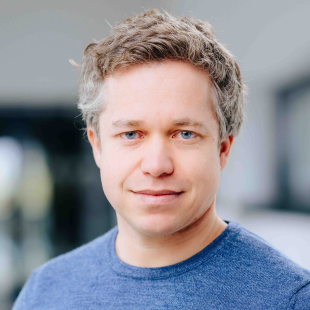
Kontakt und Affiliationen
- E-Mail:
- tobias.weich@uni-paderborn.de
- Telefon:
- +49 5251 60-2624
- ORCID:
- 0000-0002-9648-6919
- Web:
- Homepage
- Büroanschrift:
-
Warburger Str. 100
33098 Paderborn - Raum:
- D2.216
- Sprechstunden:
Nach Terminvereinbarung per Mail
Über Tobias Weich
Curriculum Vitae
Seit 2021: Professor (W3)
Universität Paderborn
Seit 2019: Emmy-Noether-Gruppenleiter
Universität Paderborn
12/2021 - 05/2022: Elternzeit (Teilzeitarbeit 66 Prozent)
2016 - 2021: Juniorprofessor (W1)
Universität Paderborn
12/2019 - 01/2020: Elternzeit (Vollzeit)
09/2016 - 08/2017: Elternzeit (Teilzeitarbeit 60 Prozent)
2014 - 2016: Postdoc
Universität Paderborn
13.06.2014: Promotion
Mathematik, Philipps-Universität Marburg, Deutschland. Betreuer: Prof. Dr. Pablo Ramacher
2005 - 2011: Studium
Physik und Mathematik, Philipps-Universität Marburg, Deutschland
2008 - 2009: Studium
Physik und Mathematik, 2008 - 2009, Université Joseph Fourier, Grenoble, Frankreich
2019: Emmy Noether-Förderung, Deutsche Forschungsgemeinschaft (DFG), Deutschland
Forschung
Ausgewählte Projekte
- TRR 358; TP B04: Geodätische Flüsse und Weyl Kammer Flüsse auf affinen Gebäuden
- TRR 358; TP B02: Spektraltheorie in höherem Rang und unendlichem Volumen
- PhoQC: Photonisches Quantencomputing
- Mikrolokale Methoden für hyperbolische Dynamiken
- Spektrale Korrespondenzen für negativ gekrümmte Riemannsche lokal-symmetrische Räume
Publikationen
Aktuelle Publikationen
Wave Front Sets of Nilpotent Lie Group Representations
T. Weich, J. Budde, Journal of Functional Analysis 288 (2025).
Temperedness of locally symmetric spaces: The product case
T. Weich, L.L. Wolf, Geom Dedicata 218 (2024).
Polyhedral bounds on the joint spectrum and temperedness of locally symmetric spaces
C. Lutsko, T. Weich, L.L. Wolf, ArXiv:2402.02530 (2024).
Ebene euklidische Geometrie. Algebraisierung, Axiomatisierung und Schnittstellen zur Schulmathematik
M. Hoffmann, J. Hilgert, T. Weich, Ebene euklidische Geometrie. Algebraisierung, Axiomatisierung und Schnittstellen zur Schulmathematik, Springer Berlin Heidelberg, Berlin, Heidelberg, 2024.
Ruelle-Taylor resonances of Anosov actions
T. Weich, Y. Guedes Bonthonneau, C. Guillarmou, J. Hilgert, J. Europ. Math. Soc. (2024) 3085–3147.
Alle Publikationen anzeigen
Lehre
Laufende Lehrveranstaltungen
- Oberseminar "Geometrische und Harmonische Analysis"
- Mathematik der Quanteninformationstheorie (Übung)
- Mathematik der Quanteninformationstheorie
Wissenschaftliches Engagement
Seit 2022 | Vorstandsmitglied des SFB/TRR 358 "Ganzzahlige Strukturen in Geometrie und Darstellungstheorie", Universität Paderborn, Deutschland
2023 - 2025 | Institutsleiter Mathematik
2022 - 2024 | Vorstandsmitglied PhoQS, Universität Paderborn, Deutschland
